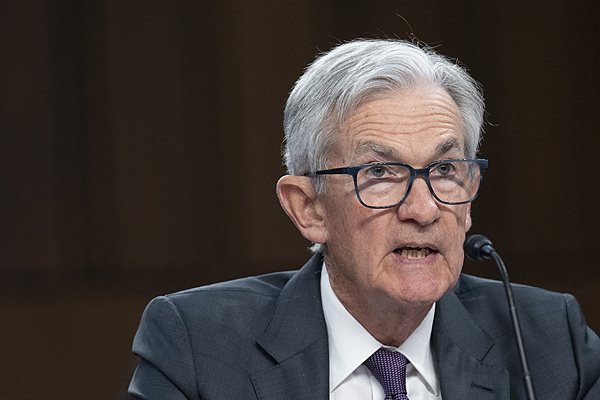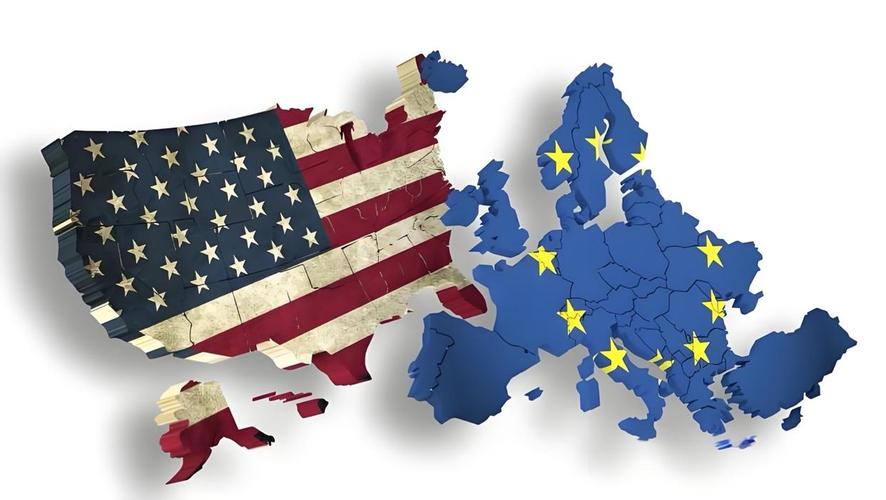
Federal Reserve Chair Jerome Powell made it clear after the June 18, 2025, monetary policy meeting that the impact of the U.S. government's tariff policies on consumers has shifted from "localized manifestations" to "widespread diffusion," and will enter a "phase of explicit visibility" in the coming months. Behind this statement lies a "triple shockwave" formed by supply chain transmission, corporate cost shifting, and the collapse of consumer confidence. The impact has spread from specific goods to daily necessities and could act as a "catalyst" pushing the U.S. economy toward stagflation.
1. The "Lag Effect" of Tariff Transmission: From Inventory Digestion to Price Surges
Tariff policies have a significant "time lag" in their impact on consumers. Approximately 60% of the goods currently on sale in the U.S. retail market were imported before the tariff policies were implemented. For example, in the iPhone 16 series sold by Apple in the first quarter of 2025, 80% of the chips and motherboard components were procured before the tariff increases. However, starting in the second quarter, the cost of newly imported components has risen by 15%-20%. This "time lag" has led to a concentrated release of price pressures in the second half of 2025.
The supply chain transmission mechanism has exacerbated price fluctuations. Walmart's supply chain data shows that 30% of the clothing, home appliances, and other goods it procures rely on Chinese supply chains. The increase in tariff costs has driven up Walmart's procurement costs by 8%-12%. To maintain profit margins, Walmart has already raised prices on some products twice, with clothing prices rising by 18% and home appliances by 15%. This phenomenon of "cost shifting" is prevalent in the retail industry, with consumers ultimately footing the bill for tariff policies.
2. The "Spiral" Rise in Inflationary Pressures: From Commodity Prices to Living Costs
Tariff policies have driven up inflation through both cost-push and demand-pull mechanisms. In May 2025, the U.S. CPI rose by 3.8% year-on-year, with core commodity prices contributing 1.2 percentage points. Taking food as an example, after China imposed tariffs on U.S. soybeans, U.S. soybean meal prices soared by 40%, driving up the costs of pork and chicken farming. In April 2025, U.S. pork prices rose by 15% year-on-year, and chicken prices by 12%, increasing household food expenditures.
Fluctuations in energy prices have further intensified inflationary pressures. Although international oil prices briefly fell by 7% after the U.S. reduced imports of U.S. LNG, global supply chain restructuring has driven up transportation costs. Data from the U.S. Energy Information Administration shows that gasoline prices in the second quarter of 2025 rose by 9% year-on-year, increasing household energy expenditures. This "imported inflation," combined with tariff policies, has created a "spiral" rise in inflationary pressures.
3. The "Collapse" of Consumer Confidence: From Deteriorating Expectations to Behavioral Shifts
Tariff policies have caused a sharp decline in consumer confidence. The University of Michigan's Consumer Sentiment Index fell to 50.8 in June 2025, a historic low since 2022. Consumers' pessimism about their household financial situations over the next 12 months has risen significantly, with 27% of respondents believing their financial situations will worsen, up 6 percentage points from the fourth quarter of last year. Inflation was cited as the top concern by 81% of respondents, while fears of an economic recession have risen to their highest level in two years.
Consumer behavior has undergone fundamental changes. A survey by KPMG shows that 50% of U.S. consumers are reducing their purchase volumes, and 49% are actively seeking discounts and promotions. Summer is typically a peak season for home appliance sales, but prices of refrigerators, washing machines, and other goods have surged due to new tariff policies, significantly dampening consumers' willingness to buy. This phenomenon of "consumer downgrading" has spread from non-essential goods to essentials, leading to profound adjustments in household spending structures.
4. The "Dilemma" of Economic Policies: The Tug-of-War Between Tightening and Easing
The Federal Reserve is caught in a policy dilemma amid tariff shocks. On one hand, inflationary pressures necessitate maintaining a tight monetary policy; on the other hand, slowing economic growth and a cooling job market call for policy easing. At the June 2025 meeting, the Fed held interest rates steady for the fourth consecutive time, but the dot plot revealed growing internal disagreements over rate cuts. Powell emphasized the need to assess the impact of tariffs before deciding on policy adjustments, a "wait-and-see" strategy that reflects high uncertainty about the economic outlook.
Corporate investment decisions have stalled due to tariff policies. Companies like Skechers have warned that tariffs will significantly increase operating costs, and Oxford Economics predicts that the U.S. economy could slip into recession in the second half of the year. This uncertainty not only inhibits corporate expansion but also leads to a decline in consumer confidence, creating a vicious cycle of "deteriorating expectations—contracting consumption—slowing economy."
5. The "Chain Reaction" from a Global Perspective: From the U.S. Market to the Global Economy
The impact of tariff policies has extended beyond national borders. Chinese export enterprises are expanding into new markets through the Belt and Road Initiative and accelerating industrial upgrading. Meanwhile, U.S. companies are relocating factories to Southeast Asia, leading to job losses for domestic workers. This supply chain restructuring has intensified global economic fragmentation, with the International Monetary Fund warning that protectionism could reduce global GDP by 1.5%.
The Fed's policy dilemma is essentially a microcosm of the retreat from globalization. When tariffs become tools for economic gamesmanship, it is consumers who ultimately pay the price. Powell's warning is not just a red flag for the U.S. economy but also a reminder to global policymakers: In the wave of protectionism, no country can remain unscathed.
The "butterfly effect" of tariff policies is unfolding. From corporate inventories to end-consumer prices, from commodity prices to living costs, and from consumer behavior to economic policies, the impact of tariff policies has permeated every corner of the U.S. economy. Powell's warning may be just the prelude to this economic storm.

Since 2025, the conflict between the United States and Europe over the governance of the digital economy has continued to escalate.
Since 2025, the conflict between the United States and Euro…
When German Chancellor Mertz officially announced that he w…
On December 3rd local time, the copper price on the London …
The European Commission announced a new economic security s…
The European Commission announced a new economic security s…
For nearly a year, US President Donald Trump has launched a…